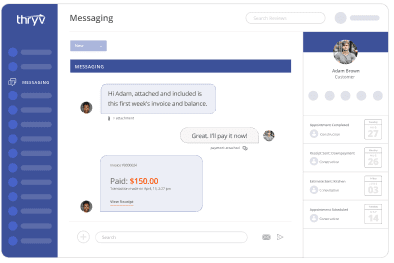Complaints are simply a fact of life when it comes to business. Whether the blame lies with you or on circumstances beyond your control, you still need to address these unhappy customers and make things right. Handle the complaint well, and you can turn a disgruntled customer into a fan. Handle it poorly, and that sole voice of dissent can wreak havoc on your online reputation. Not all complainers are alike but, they can be divided into five categories. It’s time to discover these customer personalities and learn how to effectively deal with their different types of complaints.
The Meek Complainer Personality Type
Meek Complainers tend to avoid confrontation and won’t make their complaints known at the time. Unless you actively seek customer feedback, you may never know the Meek Complainer was dissatisfied with the service they received.
You need to reach out to these customers. Solicit comments and complaints, and then do whatever is necessary to address their concerns.
The Aggressive Complainer Personality Type
Unlike the Meek Complainer, the Aggressive Complainer complains loudly to any and all who will listen. Aggressive Complainers don’t respond well to those who are aggressive in return. They also tend to be dismissive of excuses or reasons for the unsatisfactory experience.
The best response for Aggressive Complainers is to listen to their complaints, acknowledge the problem, and let them know exactly how and when it will be resolved.
The High-Roller Complainer Personality Type
This type of customer expects the absolute best and is quite willing to pay for it. Some High-Roller Complainers are reasonable when making their complaints, but others may behave more like Aggressive Complainers.
The High-Roller Complainer wants to know what you are going to do to recover from the breakdown in customer service. Rather than offer excuses, your best approach is to listen respectfully and ask questions to get to the root of the problem.
The Rip-Off Complainer Personality Type
Rip-Off Complainers aren’t really looking to resolve the issue. They’re more interested in getting something they’re not entitled to receive. If attempts to soothe a complaining customer are met with an incessant response of “Not good enough,” then odds are you’re dealing with a Rip-Off Complainer.
Your best bet is to stay objective and keep your own personal feelings in check. Back up your position with actual, quantifiable data, and make sure you document everything.
If this customer does respond with “Not good enough,” then you might consider asking what he or she would like you to do to make things right. Just make sure that your response is in keeping with your established policy for customer complaints.
The Chronic Complainer Personality Type
These customers are never satisfied and will always find something wrong. As frustrating as this can be, it’s important to remember that they are your customers. You can’t simply dismiss their complaints.
Responding to the Chronic Complainer takes extraordinary patience. As with the Rip-Off Complainer, it’s important to stay calm and collected. According to Wysocki, et. al., “[a] sympathetic ear, a sincere apology, and an honest effort to correct the situation are likely to be the most productive.”
Unlike Rip-Off Complainers, Chronic Complainers can be quite reasonable and will appreciate your attempts to redress the situation. In fact, despite their constant complaining, they tend to be good customers. They’re the type of customer to happily tell others about your positive response to their complaints.
Obviously, not all complaining customers will fit neatly into these categories. There’s bound to be some overlap. Remember, there will always be a customer who’s not satisfied. In those moments, know that it’s okay to say no to those customers. They’re just not your ideal clients. However, once you become familiar with these kinds of complaint patterns and learn to respond appropriately, you’ll hopefully find it easier to deal with the different types of customer complaints that do come your way.




